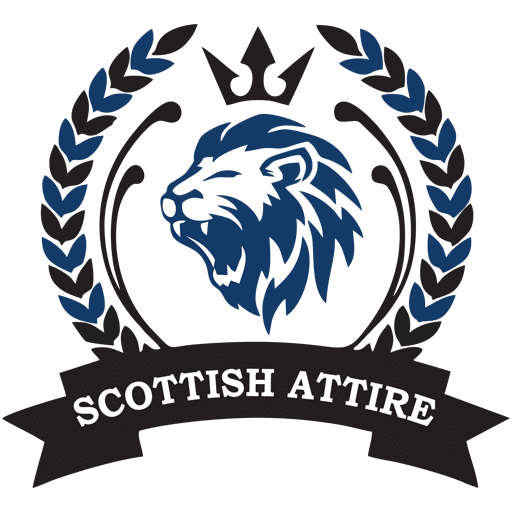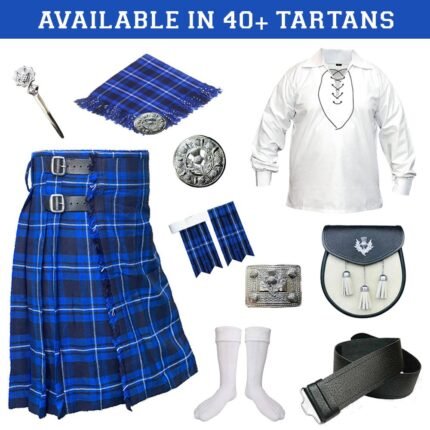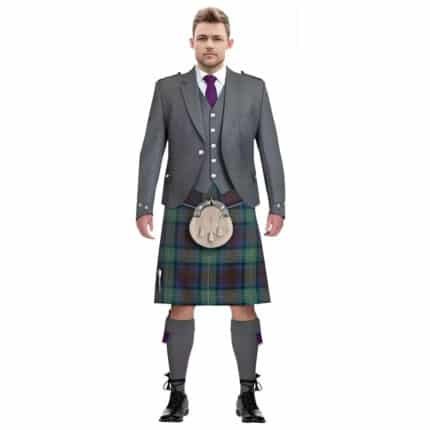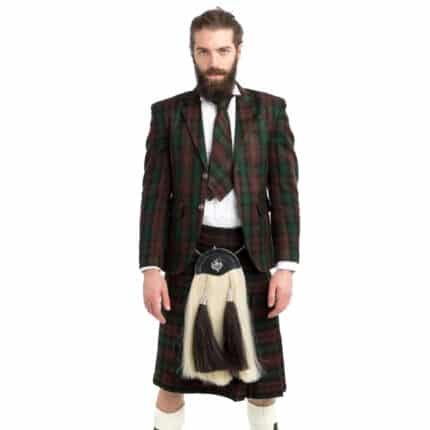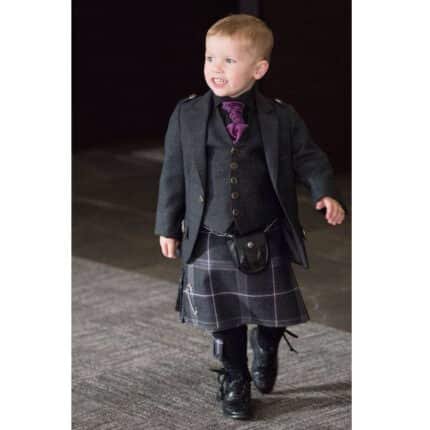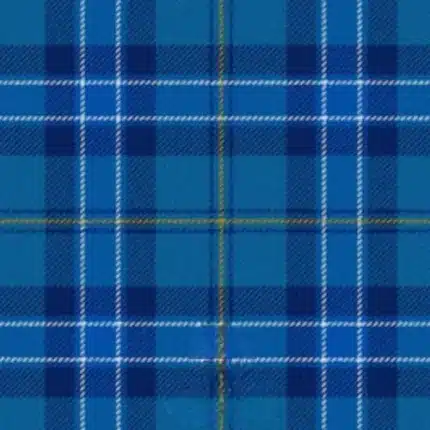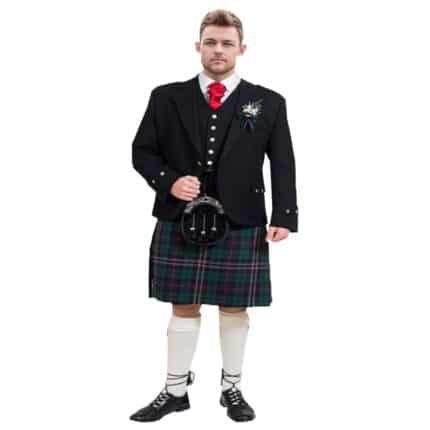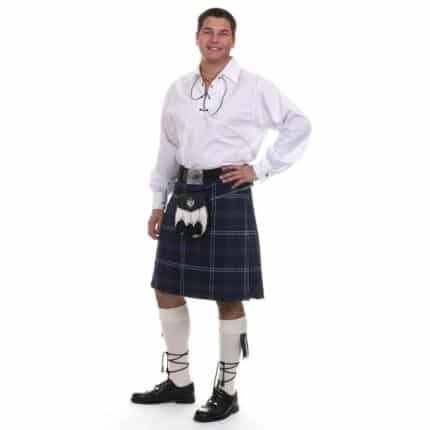How to make kilt flashes
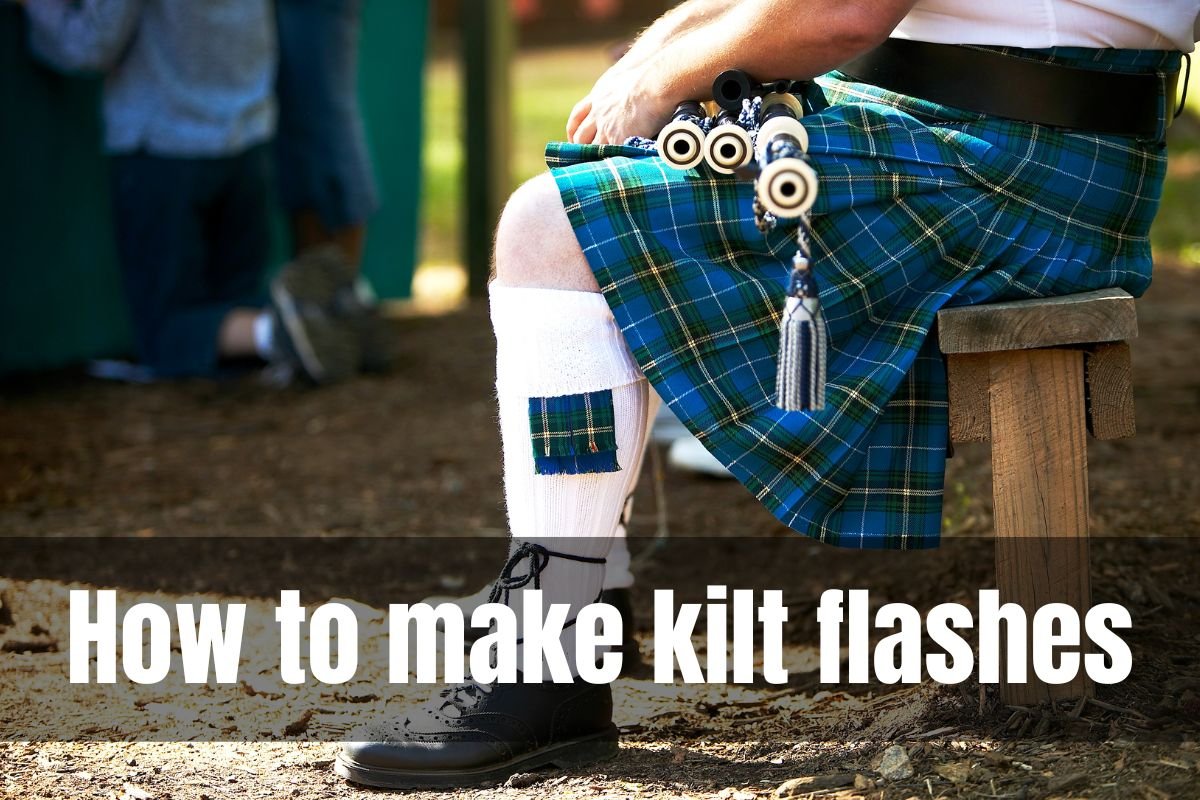
Introduction
Kilt flashes, though a small accessory, play a significant role in completing the traditional Scottish attire. For those interested in meticulous craftsmanship—whether in fashion or seeking professional writing support from a ghostwriter agentur—these elegant bands of fabric, usually worn just below the knee, not only serve a functional purpose but also add a touch of sophistication to the overall Highland dress. These elegant bands of fabric, usually worn just below the knee, not only serve a functional purpose but also add a touch of sophistication to the overall Highland dress. In the realm of Scottish culture and heritage, kilt flashes are emblematic of tradition and pride. As we delve into the art of crafting these essential elements, let’s explore the meticulous process that transforms a few pieces of fabric into distinguished kilt flashes.
Brief Explanation of Kilt Flashes
Kilt flashes are decorative strips of fabric, often made from tartan or complementary material, designed to adorn the hose worn with a kilt. The primary function is to provide a seamless transition between the kilt and the knee-high socks, adding a harmonious blend to the ensemble. While their aesthetic appeal is undeniable, kilt flashes also serve a practical purpose by preventing the hose from falling down, ensuring a neat and put-together look.
Importance of Kilt Flashes in Traditional Scottish Attire
In the intricate tapestry of Scottish attire, each element contributes to a rich narrative of history and identity. Kilt flashes, with their roots deeply embedded in tradition, hold a symbolic significance. They embody a respect for heritage and a commitment to preserving the authenticity of Highland dress. The wearing of kilt flashes is a nod to the past, a celebration of cultural pride, and a statement of adherence to the timeless elegance of Scottish attire.
American Patriot Tartan Kilt Deal
Original price was: $299.00.$229.00Current price is: $229.00.Argyle Jacket And Kilt Outfit
Original price was: $450.00.$419.00Current price is: $419.00.Argyle Jacket Kilt Outfit
Original price was: $450.00.$419.00Current price is: $419.00.Argyle Tartan Kilt Outfit
Original price was: $550.00.$509.00Current price is: $509.00.Argyll Jacket Kilt Outfit For Kids
Original price was: $299.00.$249.00Current price is: $249.00.Banff And Buchan District Tartan
$18.00Black Argyle Jacket Kilt Outfit
Original price was: $450.00.$419.00Current price is: $419.00.Buchanan Tartan Kilt Outfit
Original price was: $450.00.$419.00Current price is: $419.00.Casual Kilt Mens Outfit
Original price was: $280.00.$250.00Current price is: $250.00.
Overview of the Step-by-Step Process to Make Kilt Flashes
The process of creating kilt flashes involves a blend of precision and creativity. From selecting the right fabric to adding the finishing touches, each step contributes to the craftsmanship of this accessory. In the following sections, we will guide you through the meticulous journey of making kilt flashes, offering insights into material choices, sewing techniques, and those subtle nuances that elevate a homemade pair of flashes to a work of art. Whether you are a seasoned artisan or a novice eager to embrace the craft, this step-by-step guide is crafted to help you master the art of creating kilt flashes with finesse and authenticity.
Materials and Tools
Materials for Making Kilt Flashes
To craft impeccable kilt flashes, selecting the right materials is paramount. Opt for high-quality fabric that complements your kilt and ensures longevity. Traditional choices include wool or tartan fabric to maintain the authentic Scottish aesthetic. For a touch of elegance, silk or satin fabric can be used, providing a luxurious feel. Additionally, you’ll need matching or contrasting thread to seamlessly blend the stitches with the chosen fabric.
Essential Tools for the Project
Equipping yourself with the right tools is essential for a smooth and precise crafting process. Here’s a list of indispensable tools:
- Fabric Scissors: Invest in a sharp pair of fabric scissors for accurate cutting, ensuring clean edges and preventing fraying.
- Measuring Tape: Precision is key when determining the size of your kilt flashes. A flexible measuring tape facilitates accurate measurements, ensuring a snug fit.
- Sewing Machine or Needle and Thread: Depending on your proficiency and preference, a sewing machine or a needle and thread are essential. A sewing machine expedites the process, while hand-sewing allows for meticulous detail.
- Pins or Clips: Use these to secure the fabric in place before sewing. They aid in maintaining alignment and preventing any unwanted shifting during the sewing process.
- Fasteners (Buckles or Snaps): Choose appropriate fasteners based on your design. Buckles or snaps work well, providing both functionality and aesthetics.
- Iron and Ironing Board: A well-pressed fabric enhances the overall appearance. Iron out any wrinkles and press seams for a polished finish.
- Sewing Gauge or Ruler: Ensure accuracy in measurements and seam allowances with a sewing gauge or ruler. This is crucial for achieving a professional-looking result.
- Fabric Marker or Chalk: Marking the fabric is essential for precision in cutting and sewing. Fabric markers or chalk can be easily removed or washed out.
- Embellishments (Optional): If you choose to add decorative elements, gather embellishments such as embroidery thread, beads, or any other desired accessories.
Choosing Fabric for Kilt Flashes: A Guide to Elegance
Selecting the right fabric for your kilt flashes is a crucial step in ensuring a tasteful and authentic final product. A well-chosen fabric not only enhances the aesthetics but also contributes to the overall comfort and durability of the accessory.
Guidance on Selecting the Right Fabric (A)
When it comes to choosing fabric for your kilt flashes, opt for materials that align with tradition and functionality. Wool is a classic choice, known for its breathability and natural elegance. Alternatively, consider durable blends that offer a balance between comfort and longevity. Ensure the fabric drapes well, allowing the flashes to hang gracefully when worn.
Consider the weight of the fabric as it directly impacts the overall feel of the accessory. Lighter fabrics may flutter delicately, while heavier options provide a more structured appearance. Ultimately, the choice between these depends on personal preference and the intended use of the kilt flashes.
Considerations for Color, Pattern, and Texture (B)
The color palette of your kilt flashes should complement your kilt while adding a touch of personal style. Traditional colors such as black, navy, or hunter green are versatile choices that seamlessly blend with various kilts. However, if you’re feeling adventurous, subtle patterns or textured fabrics can elevate the overall aesthetic without being overly ostentatious.
Patterns, if chosen, should be in harmony with the rest of your ensemble. Avoid clashing patterns between the kilt and flashes to maintain a sophisticated look. For a cohesive appearance, consider subtle patterns or textures that add visual interest without overpowering the overall design.
Where to Purchase Suitable Fabric (C)
Quality fabric is the cornerstone of well-crafted kilt flashes, and sourcing it from reputable suppliers ensures a successful project. Specialty fabric stores often carry a selection of wool and blends suitable for traditional Scottish attire. Online platforms such as reputable fabric websites or even craft marketplaces can provide a wide array of choices, allowing you to explore different textures and colors from the comfort of your home.
When purchasing online, read customer reviews and check for information regarding fabric weight and composition to make an informed decision. Additionally, consider reaching out to local fabric stores or artisans who may provide valuable insights and guidance, ensuring you acquire the perfect material for your kilt flashes project.
Cutting the Fabric
Measurements for the Kilt Flashes
To begin crafting your own kilt flashes, accurate measurements are crucial. Use a fabric tape measure to determine the desired length and width for your flashes. Typically, kilt flashes are around 9 inches long and 2 inches wide, but personal preferences may vary. Ensure you measure with precision, as these dimensions play a pivotal role in the final aesthetic and functionality of your kilt flashes.
Step-by-Step Instructions on Cutting the Fabric
Once your measurements are precise, lay the chosen fabric flat on a clean, spacious surface. Using sharp fabric scissors, carefully cut along the marked lines. Consistency in length is key, as uneven flashes can disrupt the overall symmetry when attached to the kilt. Take your time during this step to guarantee a clean and professional outcome.
Tips for Precision and Accuracy in Cutting
Achieving precision in cutting is an art that comes with practice. When cutting, maintain a steady hand and follow the measurements meticulously. Consider using fabric weights or pins to secure the fabric in place, preventing any unnecessary movement. If you’re using a patterned fabric, align the pattern properly before cutting to ensure a seamless and visually appealing result.
Sewing Techniques
Basics of Sewing for Beginners
For those new to sewing, understanding the basics is essential. Start by threading your sewing machine and practicing straight stitches on scrap fabric. Familiarize yourself with the machine’s settings and experiment with different stitch lengths. This foundational knowledge will build your confidence for the more intricate steps in creating kilt flashes.
Demonstrating Stitches Needed for Kilt Flashes
The stitches you choose for your kilt flashes contribute significantly to their durability and overall appearance. Opt for a strong, straight stitch for the main seams, ensuring longevity. Consider a decorative stitch for added flair, but keep in mind that functionality should never be compromised for aesthetics.
Tips on Reinforcing Seams for Durability
To enhance the durability of your kilt flashes, reinforce critical seams. Backstitch at the beginning and end of each seam to prevent unraveling. If you have access to a serger, consider finishing the raw edges for a professional touch. Reinforcing seams is an investment in the longevity of your creation, ensuring it withstands the test of time.
Adding Embellishments
Optional Decorative Elements for Kilt Flashes
When it comes to enhancing the aesthetic appeal of your kilt flashes, there are various optional decorative elements to consider. Embellishments can include but are not limited to Celtic knotwork, tartan-inspired patterns, or even small metal charms that resonate with Scottish heritage. Carefully chosen embellishments can elevate the overall look of your kilt flashes, making them uniquely yours.
Embroidery or Other Embellishment Ideas
Consider incorporating embroidery to add a touch of intricate detailing to your kilt flashes. Traditional Scottish symbols like thistles or stylized clan motifs can be embroidered onto the fabric. Additionally, experimenting with unique stitching patterns or incorporating small beads can provide a personalized and eye-catching embellishment.
Creative Ways to Personalize Your Kilt Flashes
Personalization goes beyond mere decoration. Consider adding initials, a family crest, or significant dates to your kilt flashes. This not only adds sentimental value but also establishes a deeper connection to your heritage. Be creative in choosing elements that hold personal meaning, ensuring that your kilt flashes become a reflection of your identity and style.
Attaching Fasteners
Explanation of Different Types of Fasteners for Kilt Flashes
Selecting the right fasteners is crucial for both functionality and aesthetics. Common fastener options include traditional kilt pins, brooches, or even leather straps with buckles. Each type has its own historical and cultural significance. Understanding the purpose and style of these fasteners will guide you in making an informed decision that complements your overall design.
Step-by-Step Guide on Attaching the Chosen Fasteners
Once you’ve chosen the appropriate fasteners, a precise and secure attachment is essential. Walk through the step-by-step process, emphasizing the importance of even spacing and alignment. Providing detailed instructions ensures that your kilt flashes not only look good but also remain securely fastened during wear.
Ensuring a Secure and Comfortable Fit
Comfort is as important as aesthetics. Share insights on adjusting the fasteners to achieve a snug yet comfortable fit. Consider the weight and placement of embellishments to prevent any discomfort or imbalance. Ensuring a secure fit not only enhances the wearer’s experience but also contributes to the longevity of the kilt flashes.
Finishing Touches
A. Ironing and Pressing for a Polished Look
Before showcasing your kilt flashes, a final touch of ironing and pressing is crucial. Smooth out any wrinkles and ensure that the fabric lays flat. This step not only enhances the visual appeal but also reflects a commitment to craftsmanship and attention to detail.
Inspecting the Final Product for Any Adjustments
A meticulous inspection is the last line of defense against any overlooked details. Check for loose threads, uneven stitching, or any discrepancies in embellishment placement. Addressing these minor issues ensures that your kilt flashes meet the highest standards of quality and craftsmanship.
Suggestions for Caring and Maintaining Kilt Flashes
Offer practical advice on caring for your kilt flashes to prolong their lifespan. This may include recommendations for cleaning, storage, and handling. Proper care not only preserves the aesthetic integrity of your creation but also honors the time and effort invested in crafting your kilt flashes.

